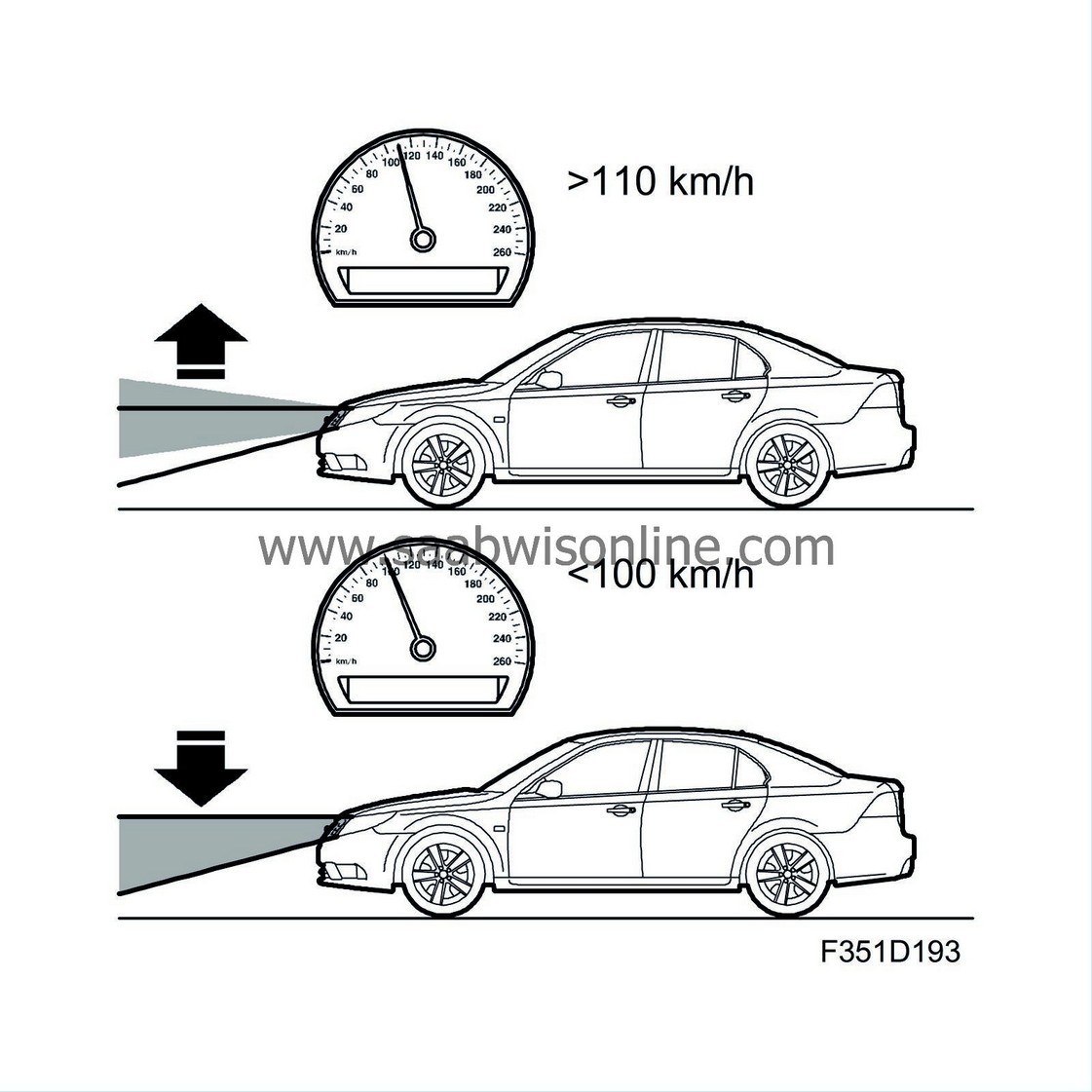Adaptive forward lighting (AFL), detailed description
| Adaptive forward lighting (AFL), detailed description |
The AFL system (Adaptive Forward Lighting) is a system that combines automatic headlamp levelling and curve-lighting headlamps into a single system. The automatic headlamp levelling function is the same as for cars with AHL only. The difference is that it is integrated with the curve-lighting headlamp system.
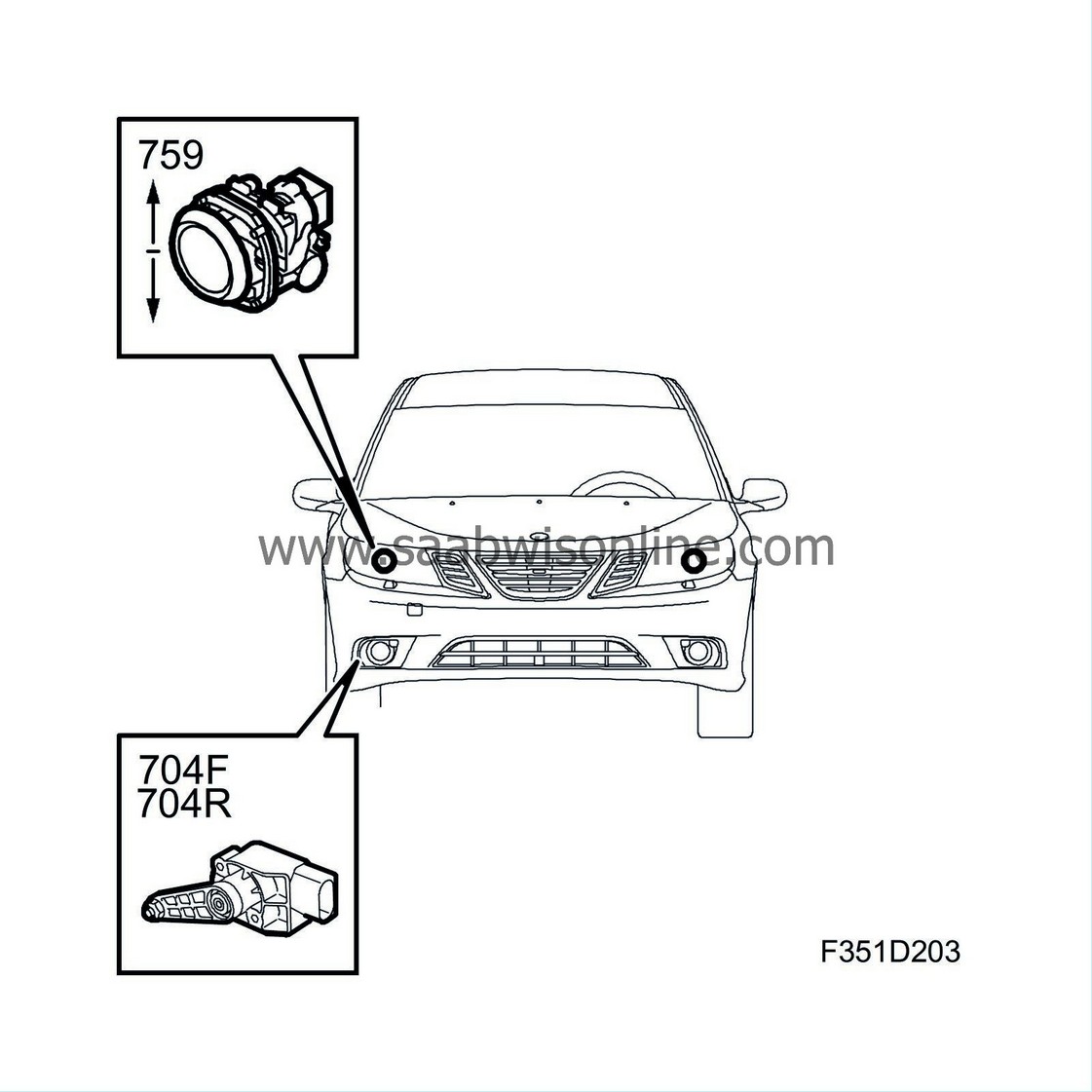
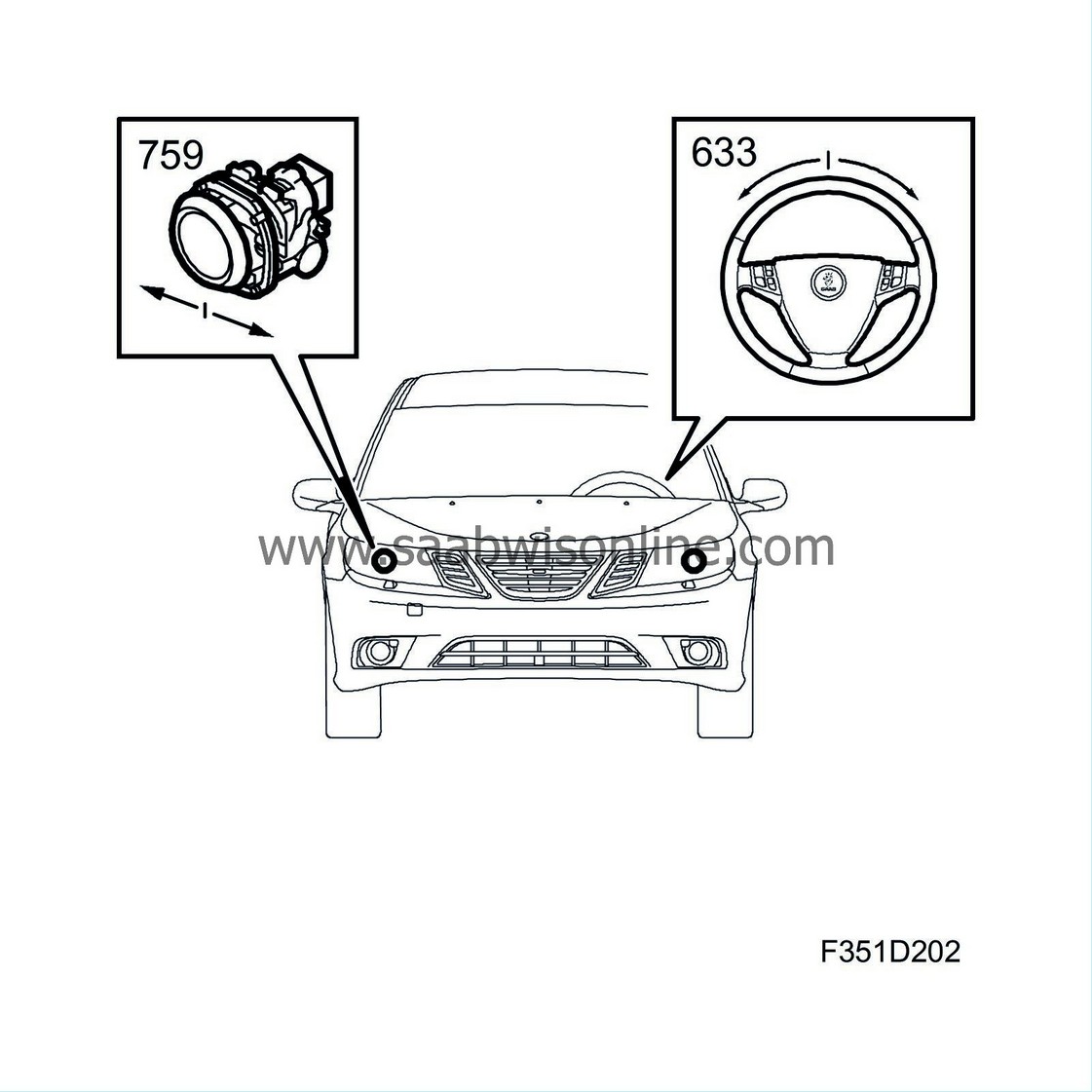
| Automatic headlamp levelling (AHL) |
Cars with Xenon lighting are equipped with automatic headlamp levelling (AHL).
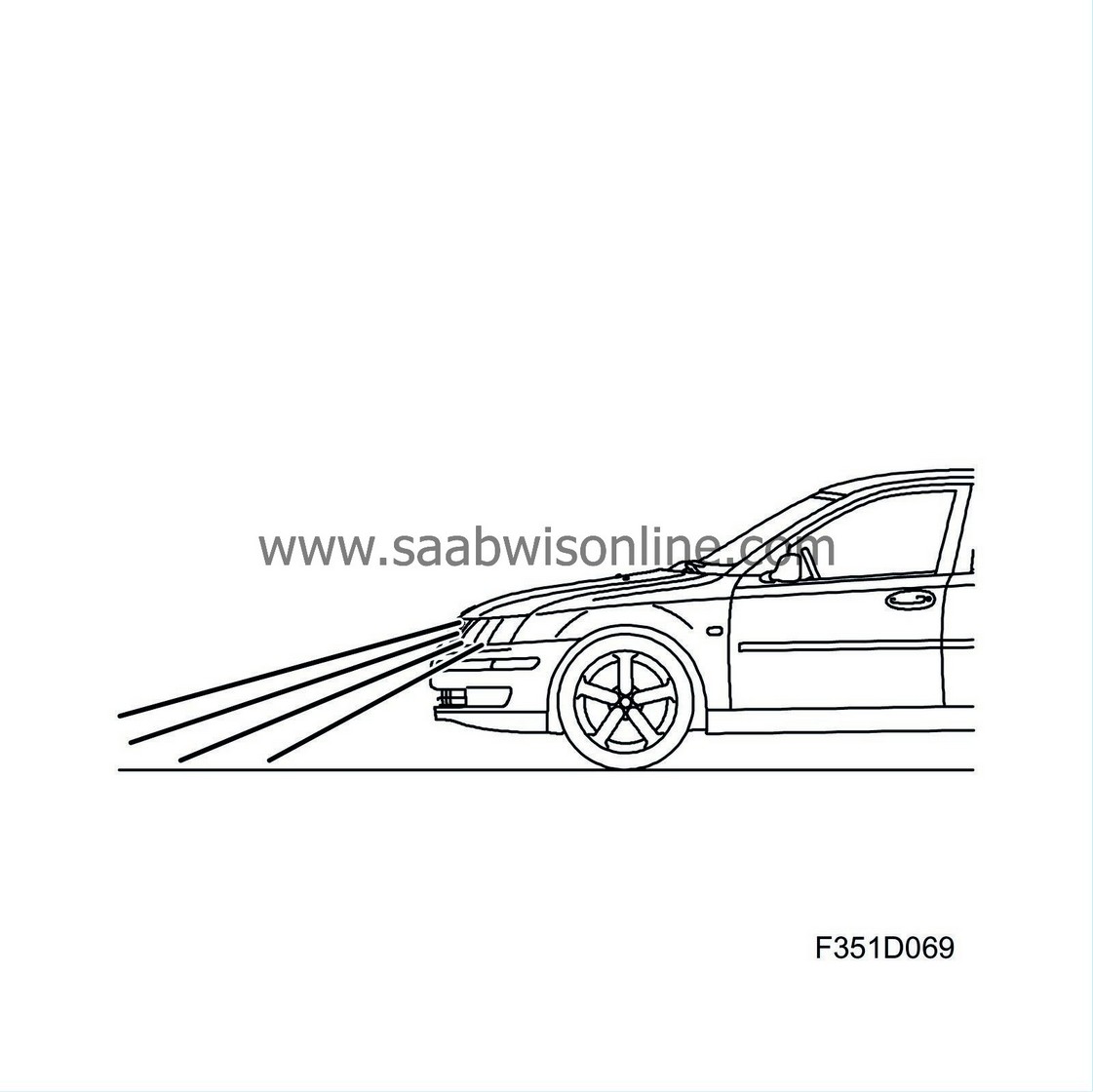
The headlamp adjustment system ensures that the headlamps are always correctly angled on acceleration, braking and with different loads. When the front of the vehicle is raised during heavy acceleration, the headlamps are adjusted down and on heavy braking, when the vehicle front is lowered, the headlamps are adjusted up. Also when the car is heavily loaded the headlamps are adjusted to the correct angle. The footbrake and vehicle speed influence the reaction time of the adjustment system.

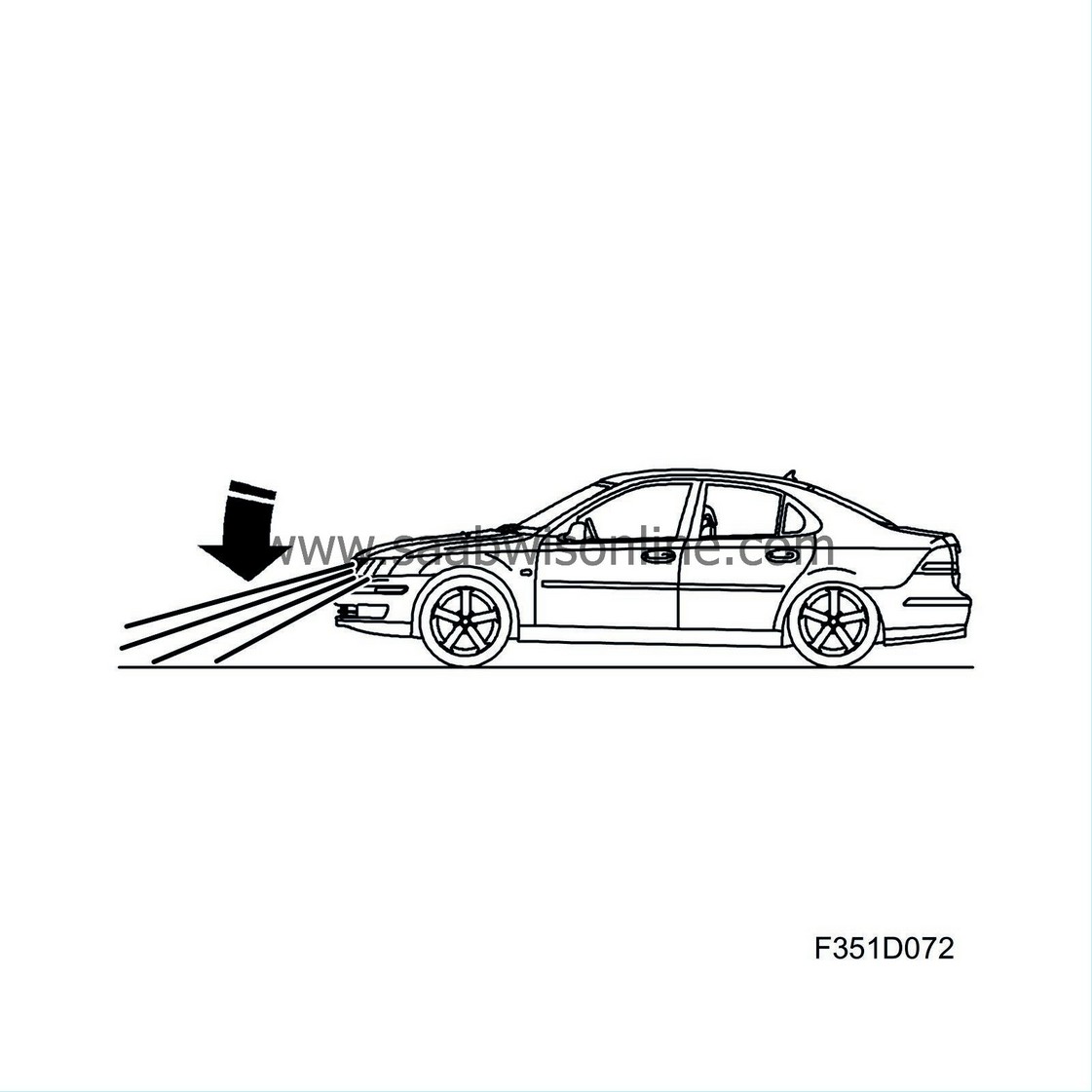
The adjustment system is fitted with two load angle sensors placed on the front and rear axles. The sensors detect the height of the front and rear of the car. The sensors are connected to an AHL control module that interprets the information from the sensors together with information on vehicle speed and brake pedal status. Each headlamp contains a stepper motor that is controlled by the AHL control module.
The system is calibrated automatically once the engine has started. The stepper motors are activated to the lowest position and then go up to the correct position based on the height/inclination of the vehicle chassis.
Upon a system fault, the headlamp beams are adjusted to a safety level slightly below the normal level. At the same time, the message "Headlamp levelling not working. Contact workshop" is displayed in SID.
The load angle sensors are supplied 5 V from AHL control module (664) pin 8 to front sensor (704F) pin 5 and from control module pin 9 to rear sensor (704R) pin 5. Pin 1 of the sensors is grounded in AHL control module pin 7 for the front sensor and pin 10 for the rear sensor. The sensors provide information to the control module in the form of a PWM signal. This signal comes from pin 6 of the sensors. The AHL control module receives the information from the front sensor on pin 5 and from the rear sensor on pin 6.

The AHL system's adjustment reaction depends on the following:
| • |
Information from the sensors 704F/704R
|
|
| • |
Light switch position
|
|
| • |
Vehicle speed
|
|
| • |
Brake pedal status
|
|
The adjustment system reaction is described in the table below.
Headlamp levelling system reaction
| Vehicle status | Headlamps On/Off | Adjustment system reaction |
| Stationary car | From | No reaction |
| To | No reaction | |
| Stationary car with load change | From | Slow reaction |
| To | Quick reaction | |
| Vehicle moving at constant speed | From | Slow reaction |
| To | Relatively quick reaction | |
| Vehicle speed change (acceleration/retardation) | From | Slow reaction |
| To | Reaction based on acceleration/retardation |
| Curve-lighting headlamps (AFL) |
Curve-lighting headlamps constitute a system that broadens the beam slightly when driving on winding roads. The headlamp's xenon optics are equipped with a stepper motor that can turn the optics maximum 15 degrees to the left or right from the "straight ahead position". The AFL control module is connected to the P-bus and uses "vehicle speed" and "steering angle" to determine how much the headlamps should be turned. Using a communication lead, AFL communicates with a control module integrated in the headlamps. The control module controls the stepper motors for headlamp levelling and curve lighting. The system also has a function that extends the area illuminated by the beam at speeds over 110 km/h.
Headlamp levelling, overview:
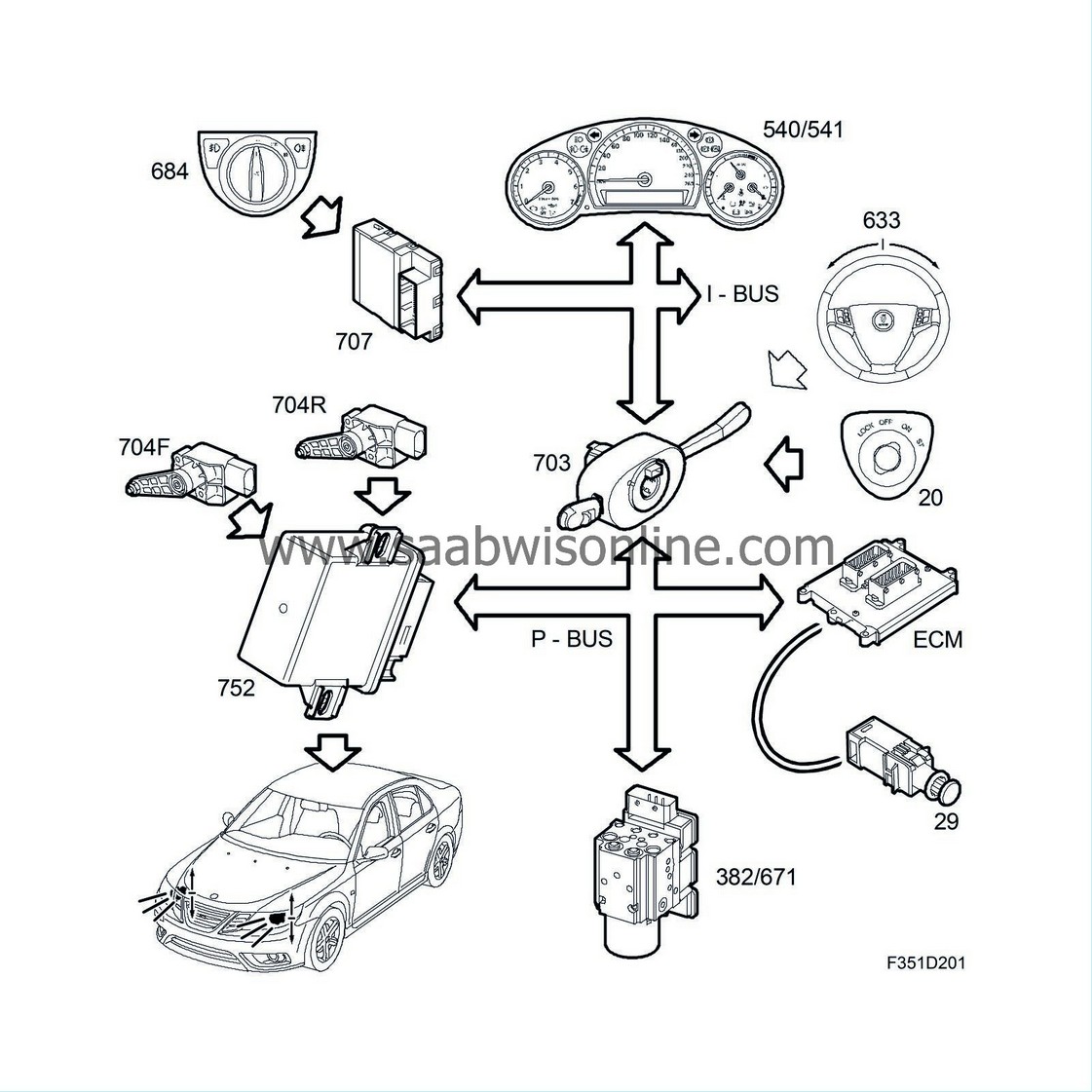
Curve lighting, overview:
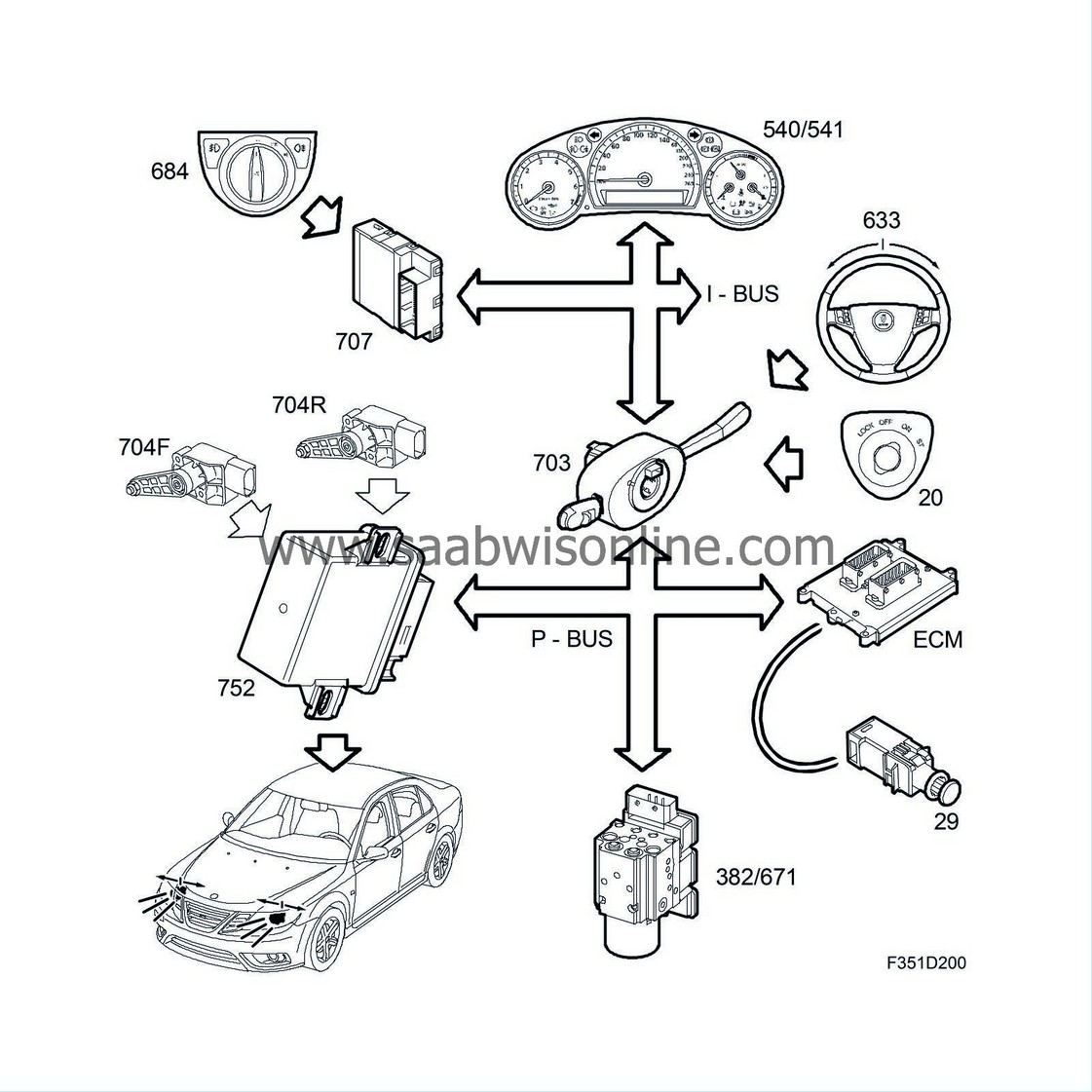
| Function |
System calibration
The system is calibrated automatically once the car's engine has started. The stepper motors are activated and the light image is aimed at the edge of the road, that is to say if the car is designed/configured for right-hand traffic, the optics are turned to the right during calibration. This is intended to prevent the risk of dazzling other drivers. If the car is designed for right-hand traffic but is temporarily set for left-hand traffic, the calibration movement is to the left. A position sensor monitors the position of the stepper motor.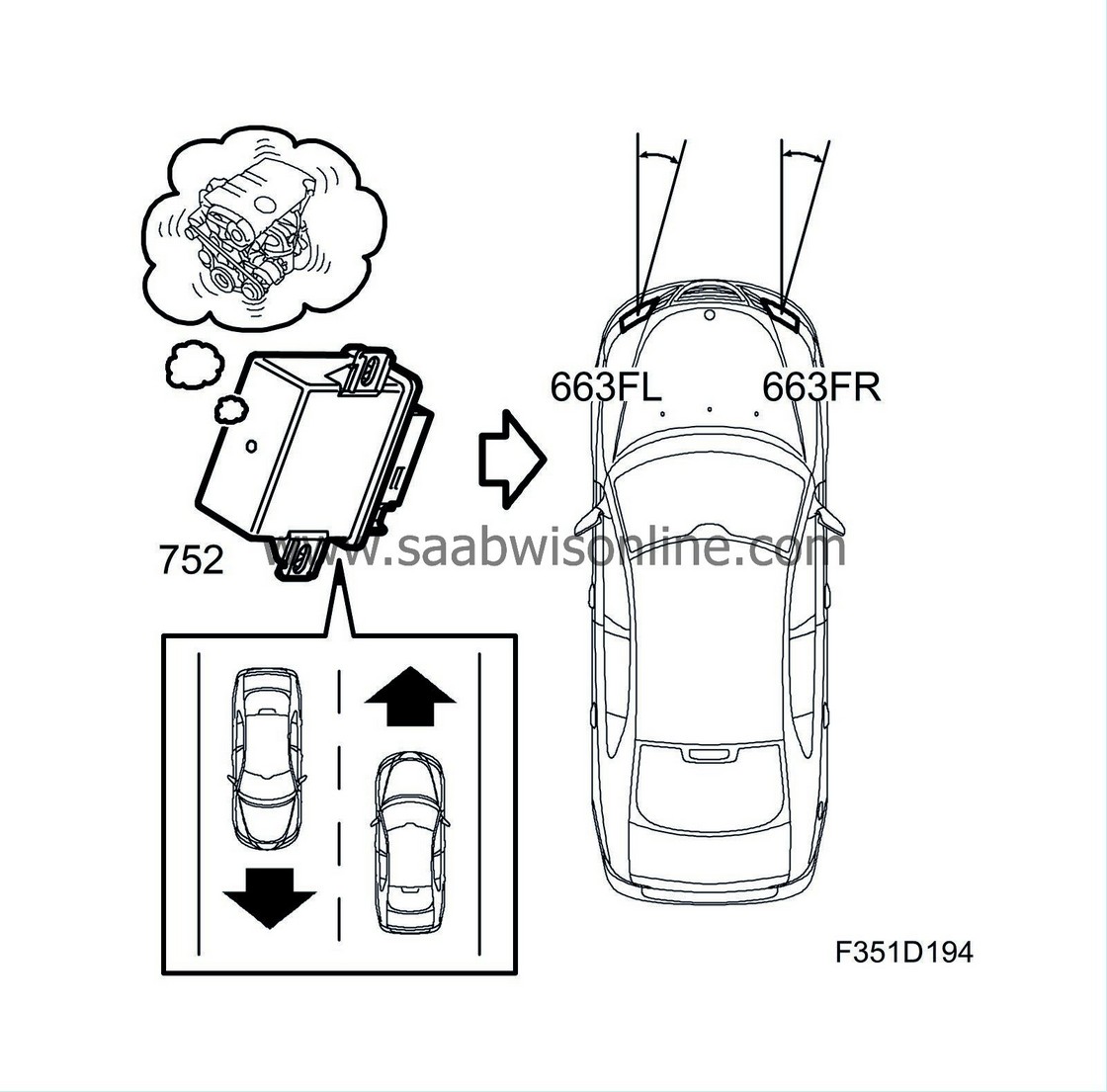
Reaction upon system fault
In the event of a system fault, the optics are set to the straight-ahead position and the message "Cornering headlights malfunction" appears on SID.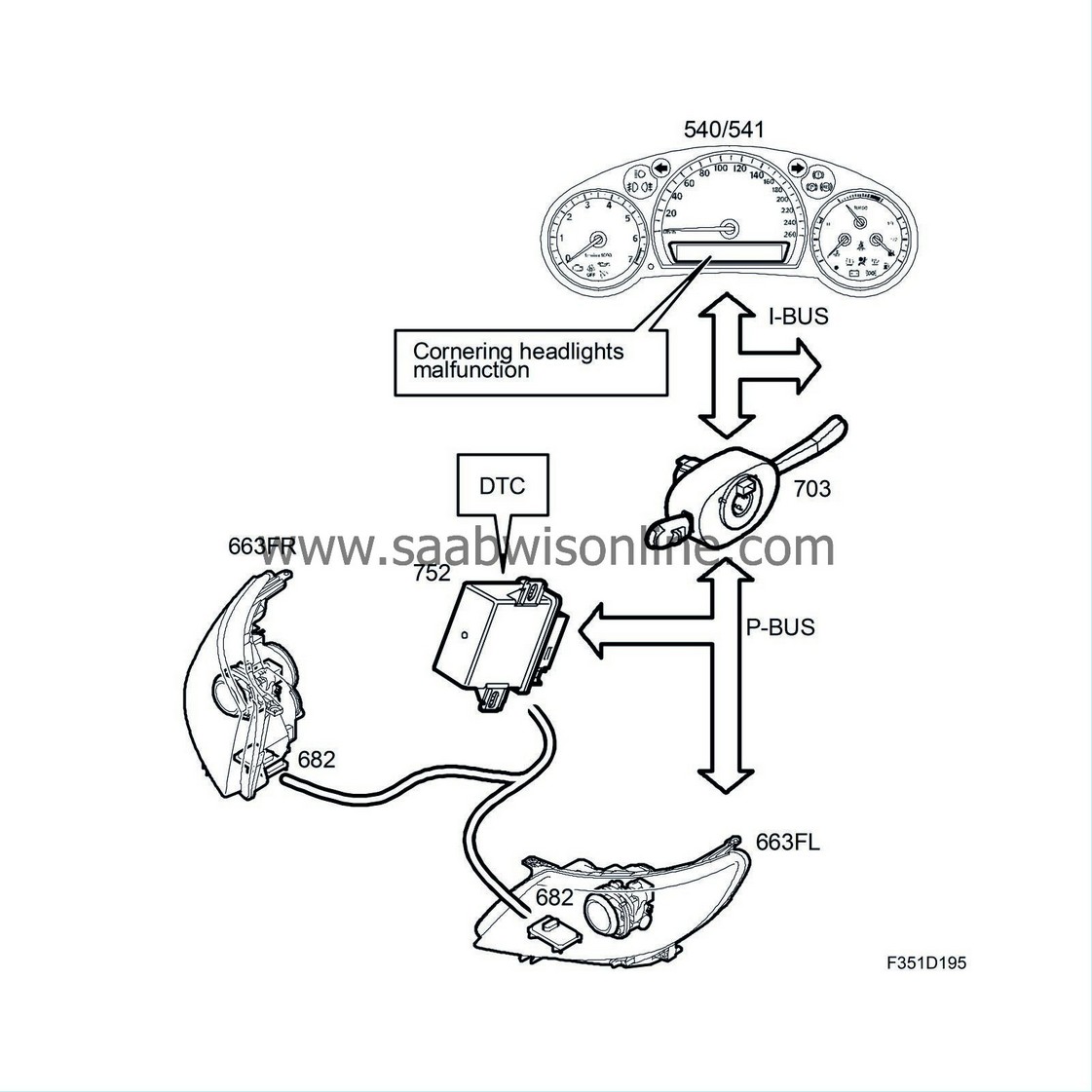
Function, curve lighting
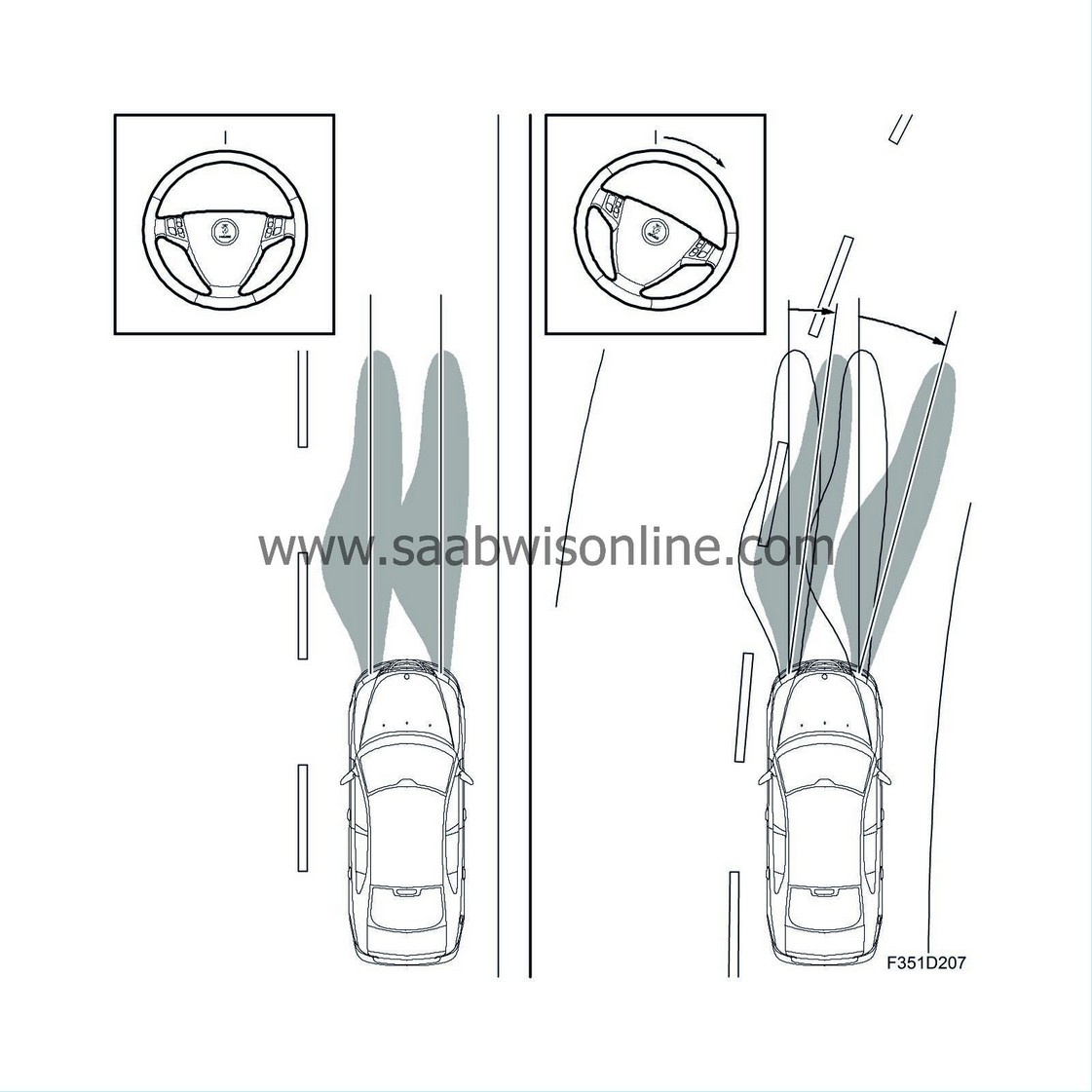
The light image of the headlamps can be turned maximum 15 degrees in either direction. The outer headlamp when in a curve is turned half as much as the inner one. For example, in a sharp right curve, the right headlamp will be turned 15 degrees while the left one will be turned half as much - 7.5 degrees. This serves to broaden the light image. Information on the current steering angle comes from CIM via the bus.
The system is active when the engine is started and the light switch is in position 2. At speeds exceeding 0.5 km/h, the reaction in the headlamps is activated gradually. At 10 km/h, they have full reaction capability.
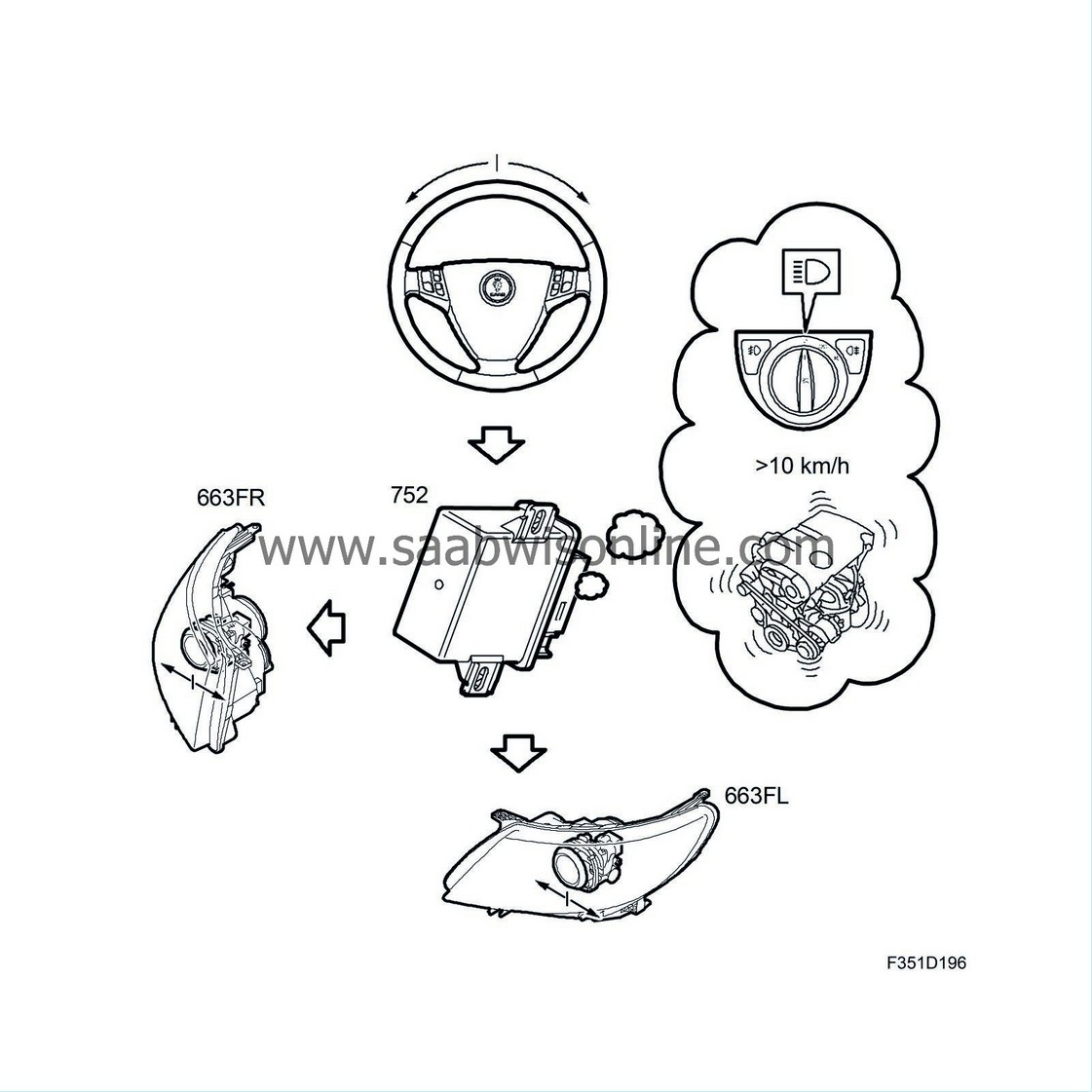
Thus, the curve lighting function cannot be controlled by sitting in a stationary car and turning the steering wheel.
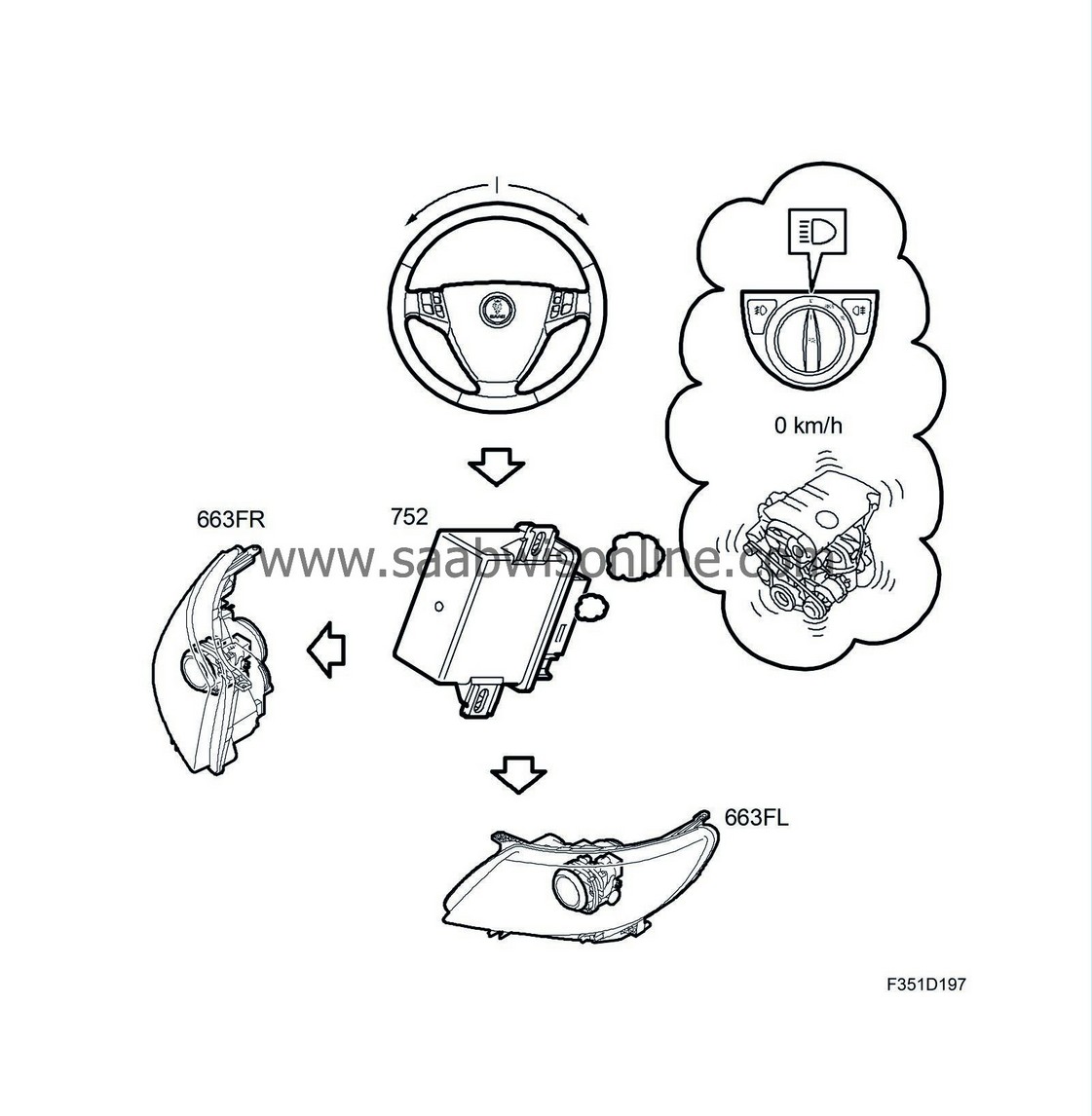
When reverse gear is engaged, the headlamps are positioned straight ahead. There is no headlamp reaction when the steering wheel is turned.
| Note | ||
|
The curve lighting function cannot be controlled when the car is stationary. |
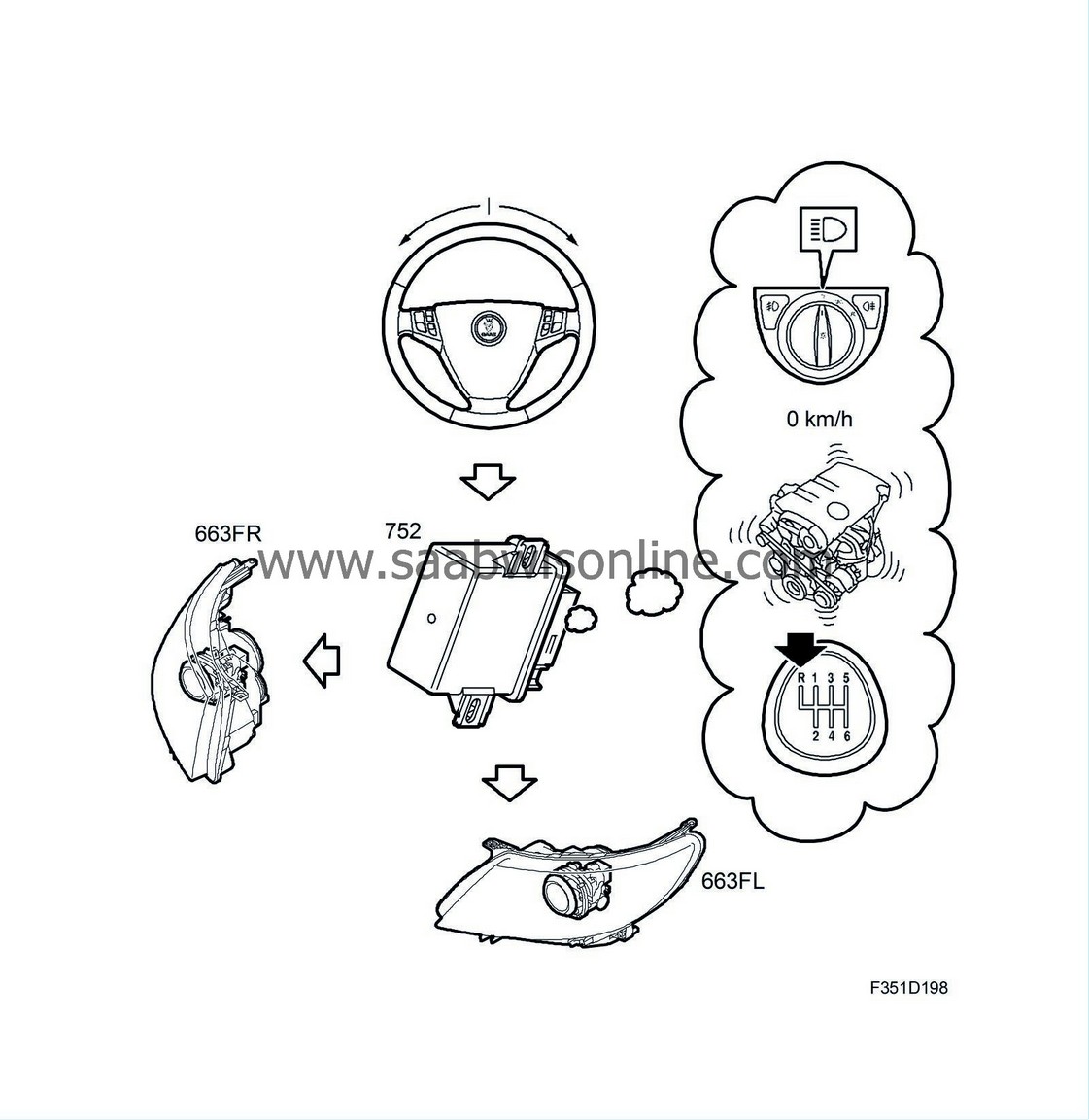
Function, right/left-hand traffic changeover
(Not US/CA/MX/JP)In order to reduce the risk of dazzling oncoming traffic, the user can temporarily switch the AFL system from right-hand to left-hand traffic (or vice versa). Using the "Settings" menu in SID, you choose "Curve lighting" and then select the desired type of traffic. Then, each time the ignition is switched on, a SID message will inform the driver that the light image has been changed. Example: the car is designed for right-hand traffic and will temporarily be driven in a country with left-hand traffic. The light image will then be adjusted DOWN and to the LEFT.
| Note | ||
|
The illuminated distance will be shorter since the light image is adjusted downward. |
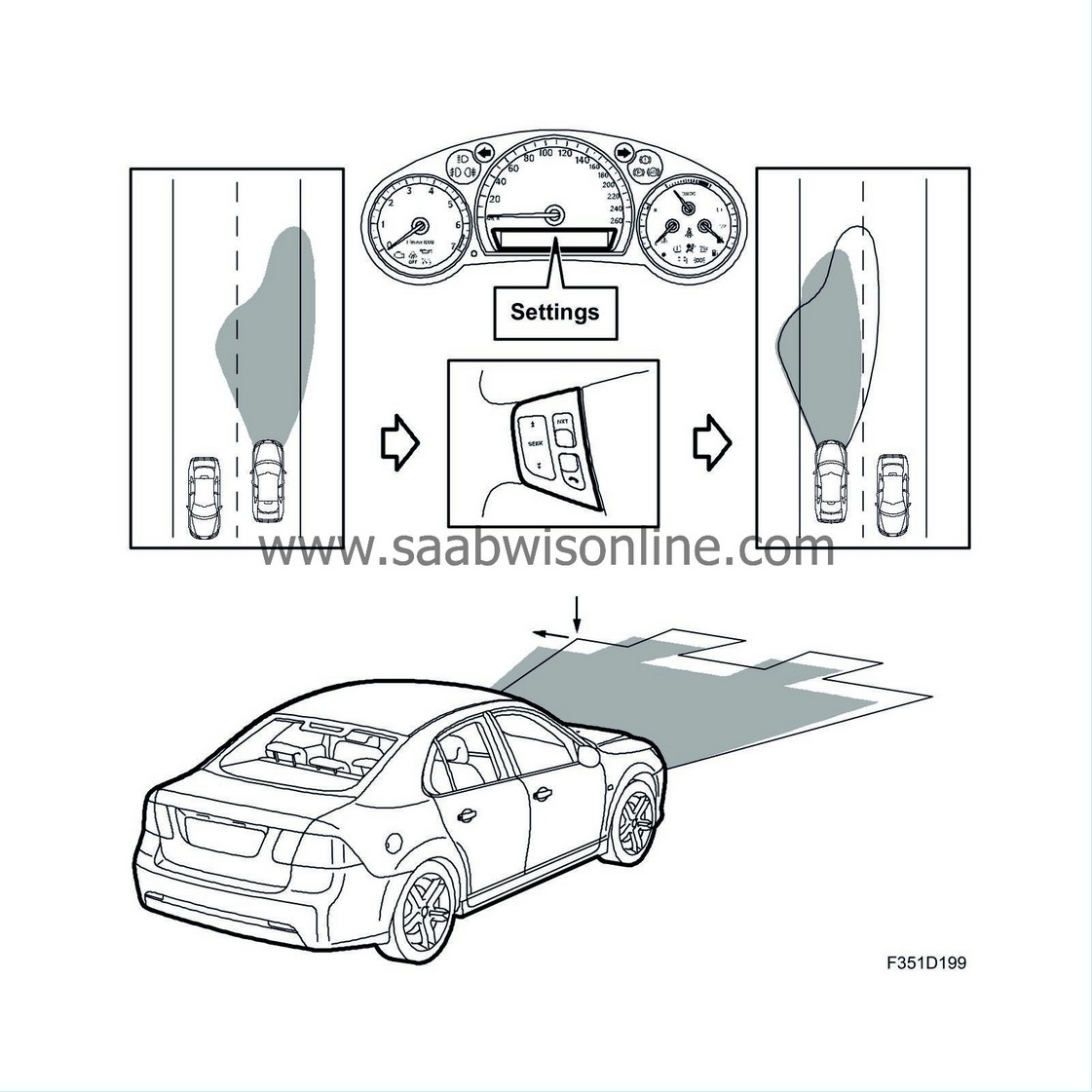
Function, motorway lighting
At vehicle speeds exceeding 110 km/h, the AFL system will adjust the setting of the headlamp levelling stepper motors so that they are angled slightly upward. When speed drops below 100 km/h, they will resume their normal setting. This function is designed to extend the illuminated distance slightly, which helps to improve safety at higher speeds.